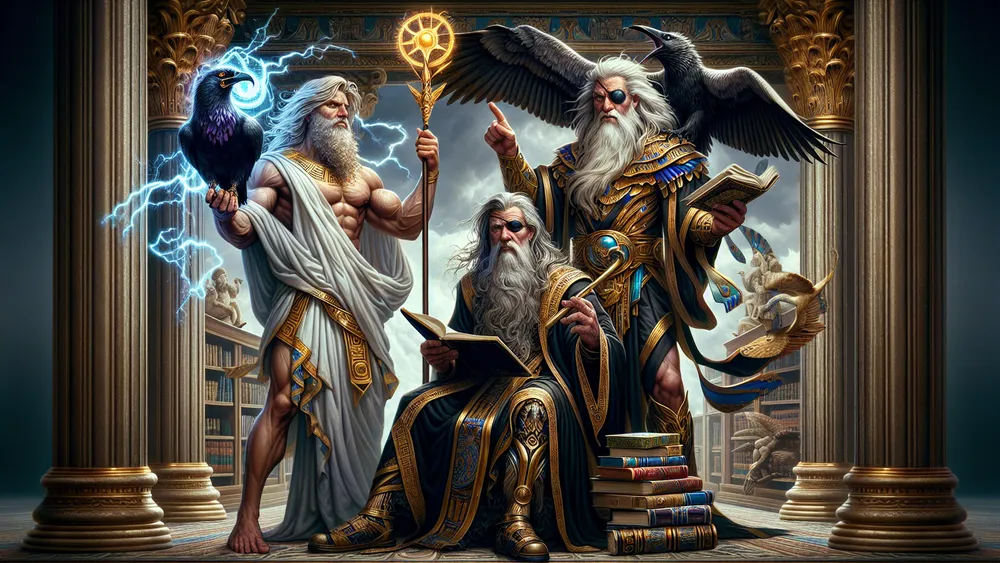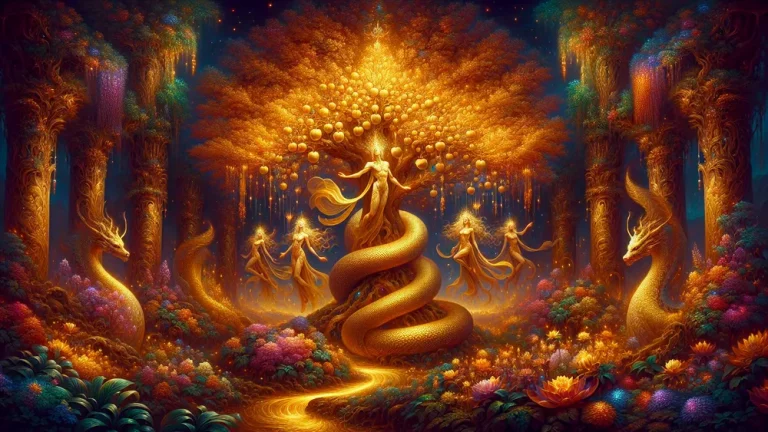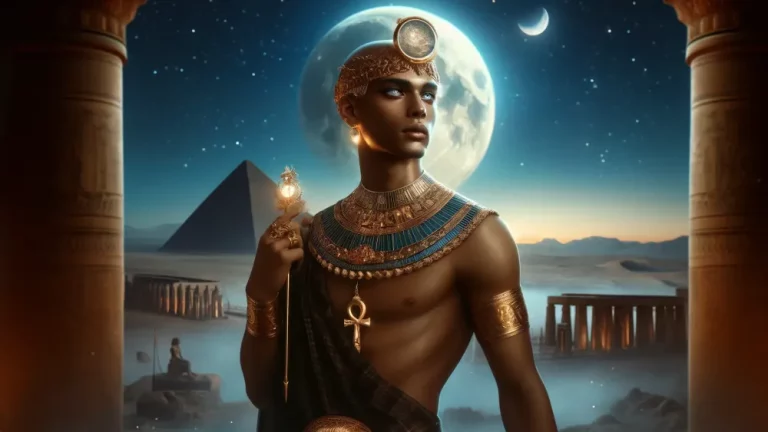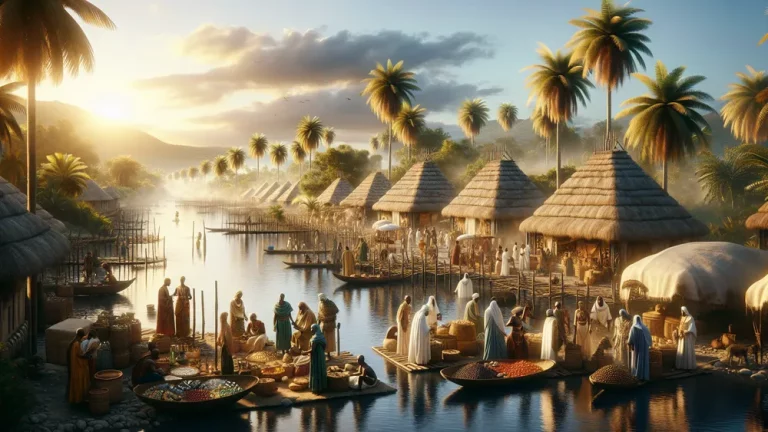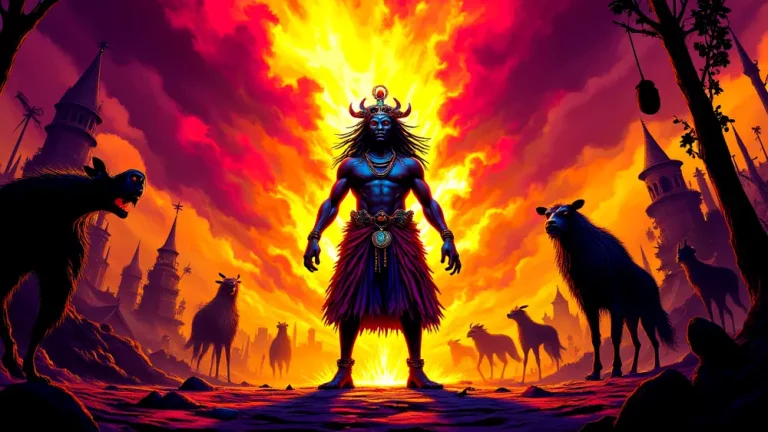Which Mythology Came First: Greek, Norse, Or Egyptian?
Hey, let’s explore as we look into the interesting stories of Greek, Norse, and Egyptian myths. Mythology is a bunch of stories from old cultures used for explaining stuff around them. It’s like today’s movies or books, but with gods, heroes, and strange creatures. Here, we’ll go back in time to see which myths came first by looking at where they started, important characters, and how they came to be.
Key Points:
- Egyptian mythology is the oldest, dating back to around 6000 BCE.
- Greek mythology emerged during the Bronze Age, around 3000-1100 BCE.
- Norse mythology originated in the early medieval years, about the 8th to 11th centuries.
- Key gods in Egyptian mythology include Ra, Osiris, and Isis, with stories of creation and the afterlife.
- Greek mythology features gods like Zeus, Hera, and Athena, with hero tales and epics like the Iliad and the Odyssey.
- Norse mythology includes Odin, Thor, and Freyja, with stories of Norse gods facing fate and destiny.
- These mythologies influenced their cultures, from religious practices to societal norms, and are still relevant in modern literature, movies, and popular culture.
We’ll say what mythology is and why it mattered then. Then, we’ll list these old civilizations to see their timelines. Next, we’ll talk about the stories of Egyptian, Greek, and Norse myths along with the evidence found that makes these stories real. At the end, we’ll compare myths, point out what they share and what’s different, and discuss their effects on today’s world.
So, whether you’re new or experienced, come with us as we look into these old stories that have held human interest for many years.
Mythology Came First: Greek, Norse, Or Egyptian: Overview and Key Facts
| Civilization | When | Main Gods | Big Stories | Proof Found |
|---|---|---|---|---|
| Egyptian | Old times (~6000-3150 BCE) to end of Pharaohs (30 BCE) | Ra, Osiris, Isis, Anubis | Making of world by Atum, Osiris and Isis, Book of the Dead | Pyramids, Temples, Writings, Paper rolls |
| Greek | Minoan times (~3000-1100 BCE) to Hellenistic end (31 BCE) | Zeus, Hera, Athena, Apollo | Iliad, Odyssey, 12 Labors of Heracles, Theogony | Parthenon, Temples, Pottery, Writing |
| Norse | Viking days (~793-1066 CE) | Odin, Thor, Freyja, Loki | Making of Yggdrasil, Ragnarok, Poetic Edda | Rune stones, Burial places, Stories, Prose Edda |
Where Mythology All Began
In order to know where these old myths come from, we must see what myths are and also understand why they were important, and this involves looking at how they mattered to people long ago as well, so starting here is crucial. Myths were big to folks back then.
What Is Mythology?
Mythology is just a bunch of tales old cultures used to make sense of the world. These tales were not just for fun; they helped people get nature, actions, and traditions. For instance, myths told why seasons changed, why animals acted certain ways, or why rituals happened. Imagine myths as old-time science fiction or fantasy with gods and heroes answering big questions. In old times, myths were important for many reasons:
- Giving Reasons for Nature: Myths told why things like storms, quakes, and eclipses happened.
- Explaining Actions: Stories showed right and wrong and human traits.
- Tradition Origins: Myths told where rituals, festivals, and rules came from, making them special.
Myths explain natural phenomena, moral values, and cultural traditions in a way that ancient cultures could understand and pass down knowledge.
Timeline of Ancient Civilizations
To know where Greek, Norse, and Egyptian myth stories started, it’s important to see the timelines of these old cultures. The Egyptian culture is very old, starting around the old times around 6000 BCE. People set up early towns along the Nile, and by 3100 BCE, Upper and Lower Egypt became one under the first king, Narmer.
This culture grew strong in many ruling families, peaking during the New Kingdom (1550-1070 BCE) with big things like building pyramids and growing the kingdom. But Greek culture started with the Minoan culture around 3000 BCE, then Mycenaean culture until 1100 BCE.
Classical Greece, famous for its art, thought, and government, started around 800 BCE and went on until the Hellenistic period, ending in 31 BCE when Rome took over.
Norse culture showed up much later, in the Viking Age from 793 CE to 1066 CE. This time was full of sea journeys, trade, and spreading Norse ways in Europe. Looking at these timelines, Egyptian culture came way before Greek and Norse by thousands of years. Here’s a quick view of these timelines:
| Civilization | When | Important Events |
|---|---|---|
| Egyptian | Predynastic Period (~6000-3150 BCE) to the end of the Pharaonic era (30 BCE) | Egypt Unites (3100 BCE), Building Pyramids (c. 2580-2560 BCE), New Kingdom (1550-1070 BCE) |
| Greek | Minoan Civilization (~3000-1100 BCE) to the end of the Hellenistic Period (31 BCE) | Mycenaean Rise (c. 1600-1100 BCE), Classical Greece (c. 800-323 BCE), Hellenistic Period (323-31 BCE) |
| Norse | Viking Age (~793-1066 CE) | Viking Raids Begin (793 CE), Founding Iceland (c. 870 CE), Battle at Stamford Bridge (1066 CE) |
Egyptian Mythology
Since we now know the timelines properly, and that’s very crucial for us to understand the context in which these myths were formed, let’s get into the old and detailed world of Egyptian myths.
Early Days and Historical Proof
Egyptian mythology starts around 6000 BCE in the old times, when people by the Nile made complex groups. These stories grew a lot in the Early Dynastic Period (3100–2686 BCE), shown by the Pyramid Texts. These are very old religious texts from around 2400 BCE. These texts, written on pyramid walls, were guides for dead pharaohs in their next life, like old manuals. Findings like temple writings and objects also show early Egyptian myths. The Temple of Horus in Edfu tells the myth of Horus and Seth with detailed writings, giving important views into ancient Egyptian beliefs. Key sources of early Egyptian mythology include:
- Texts in Pyramids: Oldest religious texts, from around 2400 BCE.
- Writings in Temples: Detailed stories of myths and religious practices.
- Objects: Statues and amulets that show gods and myth scenes.
Key Gods and Stories
In Egyptian myths, many gods and goddesses were very important for people’s beliefs. Ra, the sun god, was seen as the chief god and made everything. He had a falcon head and a sun disc on top, showing his control over the sky and sun. Osiris, the god of the next life and new beginnings, was another key god.
He looked like a wrapped-up king, showing his part in the afterlife. Isis, Osiris’s wife and the goddess of magic and being a mom, was known for her caring and watching over people. These gods and goddesses were not just ideas. They were key to how Egyptians saw the world and their spot in it. These gods’ stories were big in Egyptian culture, shaping daily life and religion.
Ra’s story of crossing the sky showed day and night. Osiris’s death and comeback story explained ideas about the next life. In the story, Seth killed Osiris and cut him up, spreading parts all over Egypt. Isis put him back together and revived him, showing life, death, and rebirth.
This story shaped burial ways, like wrapping bodies and making fancy graves for safe travel to the next life. Temples for these gods were worship spots and community hubs. People did rituals and festivals there to honor the gods and ask for help.
Greek Mythology
After looking at the detailed stories of Egyptian myths, we now look to the interesting world of Greek myths.
Beginnings and Historical Progress
Greek myths started in the Bronze Age, around 3000-1100 BCE, changing a lot over time, especially in the Archaid (800-480 BCE) and Classical (480-323 BCE) periods. Early stories were greatly shaped by Minoan culture which grew on Crete island, and Mycenaean culture in mainland Greece. These cultures added things to Greek myths.
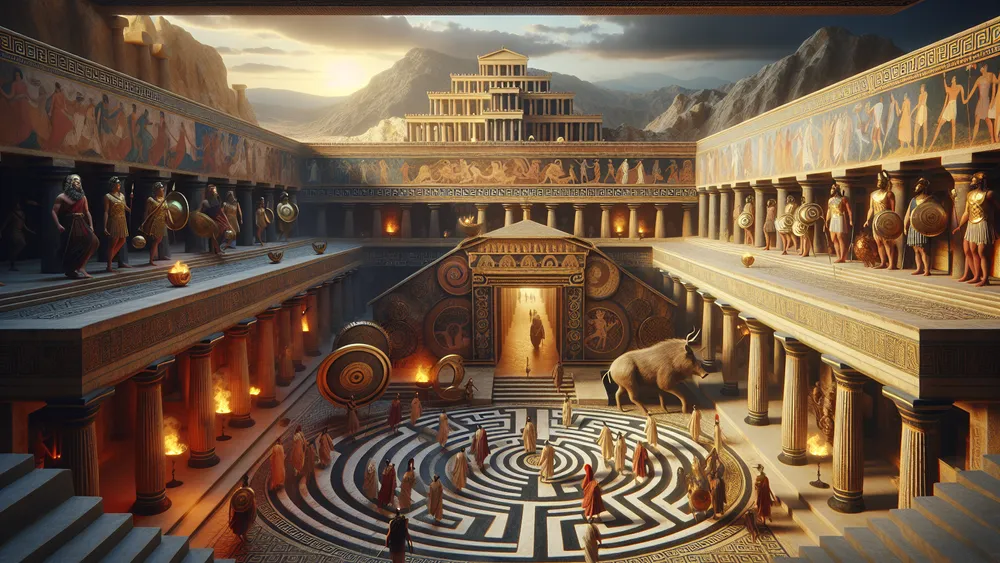
For example, the labyrinth story with King Minos from Crete, and hero tales of Mycenaean fighters like those in Homer’s stories.
For example, Greek myths changed over time. Older stories were changed and made bigger by later people. Key influences from these early cultures include:
- Minoan Civilization: Gave stories like the Minotaur and the labyrinth.
- Mycenaean Civilization: Shaped hero tales and big poems, like the Trojan War stories.
- Archaid and Classical Periods: Added and made myths into the detailed stories we know today.
Greek myths evolved over time, drawing influences from Minoan and Mycenaean civilizations, with the Archaid and Classical periods contributing to the detailed stories known today.
The Greek Gods and Their Tales
Greek myths have many gods and goddesses, each with their own jobs and traits. Zeus, leader of the gods, ruled the sky and thunder, shown with a lightning bolt. His wife, Hera, was goddess of marriage and family, known for being jealous and vengeful to Zeus‘s many lovers and children.
Athena, goddess of wisdom and war, was born in armor from Zeus’s head, showing her role in smart fighting and thinking. These gods were not far-off. They were part of Greek daily life, affecting politics and relationships. Stories about these gods greatly affected Greek culture and society. For example, Athena’s birth from Zeus’s head showed the importance of wisdom and strategy.
The labors of Hercules, many tasks done by Hercules, showed strength, perseverance, and redemption. These stories were for entertainment and also taught morals and ethics. Greek myths were big in literature and art. Homer’s epics, “The Iliad” and “The Odyssey,” show how these stories were part of Greek literature, exploring human nature and gods.
In art, these gods and their stories were put in sculptures, pottery, and temple decorations, serving as religious symbols and cultural expression.
Norse Mythology
Since we have looked into Greek myths, let’s go north to check out the interesting stories of Norse myths.
How It Started and Main Sources
Norse myths began with German and Scandinavian tribes in the early medieval years, about the 8th to 11th centuries. These stories were shaped by the tough weather and sea life of the Norse, showing their hard times and victories in a world led by nature.
Main sources of Norse myths are the Poetic Edda and Prose Edda, both put together in the 13th century. The Poetic Edda has Old Norse poems with myth and hero stories. The Prose Edda, by Iceland writer Snorri Sturluson, is a guide for these myths.
The Eddas are like collections of stories and poems given through generations. Key sources of Norse mythology include:
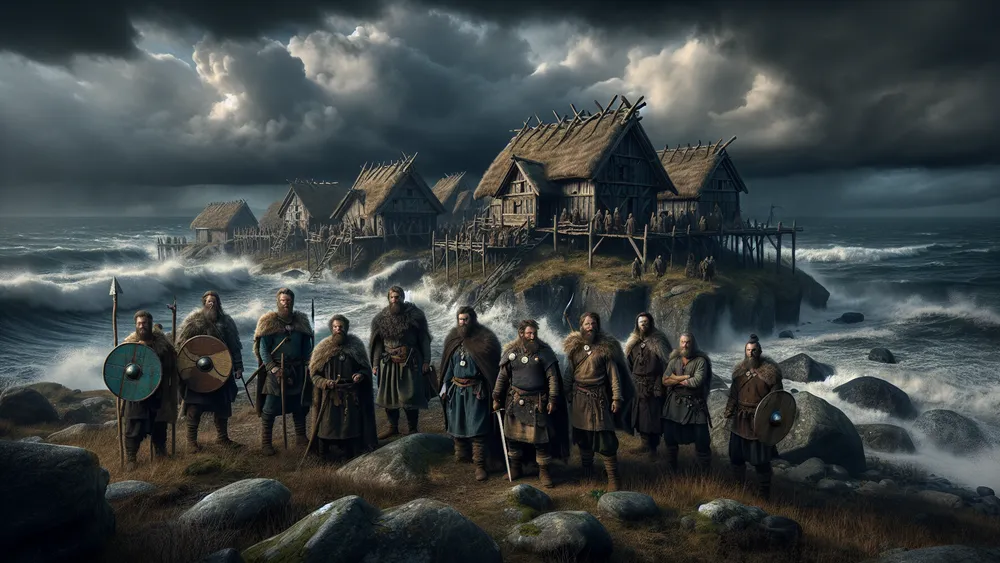
- Poetic Edda: A collection of Old Norse poems that provide mythological and heroic tales.
- Prose Edda: Written by Snorri Sturluson, this work serves as a guide for understanding Norse myths.
- Sagas and Skalds: Additional sources that provide insights into the Norse worldview and their mythological framework.
Important Figures and Stories
Norse myths have many gods and goddesses, each with their own traits and stories. Odin, leader of the gods, is known for seeking wisdom and gave an eye to drink from the Well of Knowledge. Thor, his son, is god of thunder and uses the hammer Mjölnir to protect Asgard and Midgard from giants and other dangers.
Freyja, goddess of love, beauty, and fertility, is also a strong warrior who goes into battle on a chariot pulled by cats. These gods were not far away but were part of the Norse way of seeing the world, showing the values and struggles of the Viking people. For instance, the stories about these gods and goddesses influenced Norse culture and society a lot.
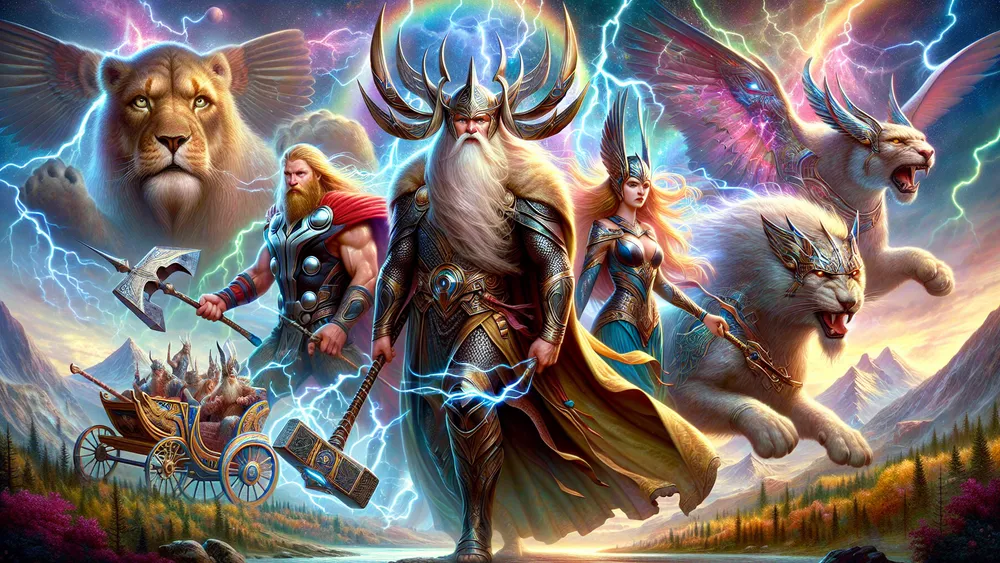
Thus, Odin‘s quest for wisdom and his role as a god of war and death showed the Viking focus on knowledge, bravery, and the afterlife. Thor‘s fights with giants represented the non-stop fight against chaos and the protection of the community. They were more than just stories for fun; these tales were part of daily life, shaping rituals, social rules, even legal practices.
The stories also affected culture beyond Viking times, being part of today’s books, movies, and popular culture. For example, Marvel Comics has the character Thor, who is based on the Norse god, bringing these old myths to today’s audience.
Comparative Analysis
Since we have looked at Norse myths, we should now compare these interesting myths with Greek and Egyptian myths.
Shared Ideas and Differences
When looking at Greek, Norse, and Egyptian myths, there are a few common ideas like creation myths, afterlife beliefs, and hero stories. For example, all these myths have tales about how the world and humans started. Greek myths say the world began with Chaos, then came Gaia (Earth) and Uranus (Sky).
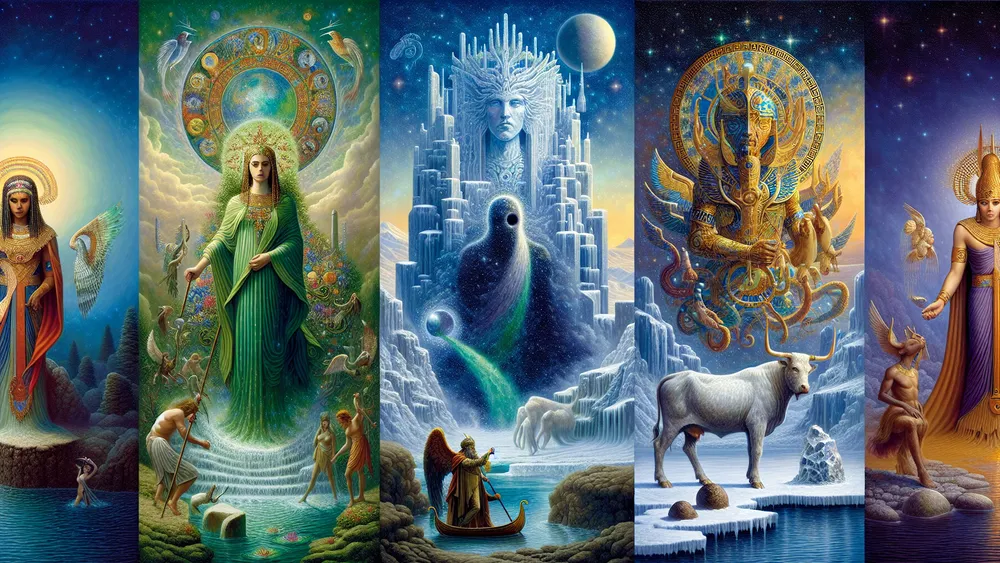
Norse myths talk about the world coming from the void of Ginnungagap, and the first beings were Ymir and Audhumla. In Egyptian myths, the world is made from the waters of Nun, by the god Atum. Thus, the afterlife is also a big topic in these stories. Greeks thought about an underworld run by Hades.
The Norse had places like Valhalla and Hel. Egyptians had a detailed view of the afterlife, including a trip through the Duat and being judged by Osiris. Stories of heroes like Greek Hercules, Norse Sigurd, and Egyptian Horus showed the ideals of each culture. In addition, each myth has special parts that show their own cultures.
Greek myths often show gods with human traits and faults, showing Greek interest in people and thinking. Norse gods, however, are tied to fate and destiny, reflecting the tough life of Norse people. These myths speak about Ragnarok, the end of the world, and the bravery of facing fate.
Egyptian myths focus more on the afterlife and the god-like nature of their pharaohs, showing the belief in eternal soul and the pharaoh’s role in cosmic order. Consequently, these differences show how each culture used myths to talk about their own issues and views, making a rich set of stories that still interests us now.
Influence on Today’s Culture
Greek myths, Norse myths, and Egyptian myths have had a lasting effect on books, movies, and popular things today. For example, Greek mythology influenced many works like the Percy Jackson series by Rick Riordan, where ancient gods and heroes appear in modern times, and movies like Clash of the Titans. In addition, Norse myths also shaped today’s culture with Marvel’s Thor movies, which brought characters like Thor, Loki, and Odin to a worldwide audience.
Egyptian myths show up too, in movies like The Mummy series and books like Wilbur Smith’s River God, which draw a lot from ancient Egyptian themes and gods. Thus, these stories are a big source of ideas. They give us timeless tales that still entertain and connect the old and new worlds.
FAQs
1. Which mythology is the oldest?
The oldest mythology among Greek, Norse, and Egyptian is Egyptian mythology, based on historical evidence.
2. Are there any similarities between these mythologies?
There are indeed similarities between these mythologies, such as creation myths, afterlife beliefs, and hero stories.
3. How did these mythologies influence their respective cultures?
These mythologies influenced their respective cultures by shaping religious practices, societal norms, and artistic expressions.
4. Are these mythologies still relevant today?
These mythologies are still relevant today as they continue to influence modern literature, movies, and popular culture.

